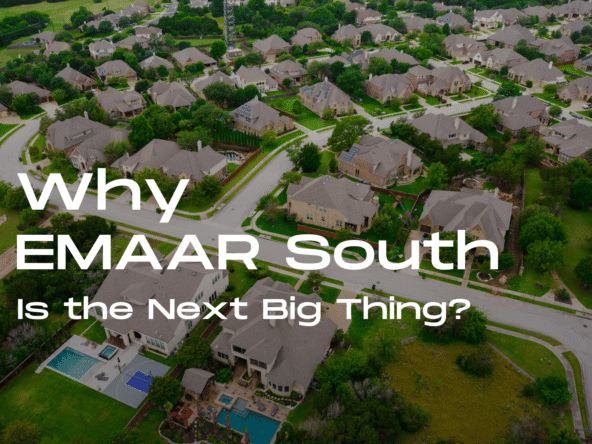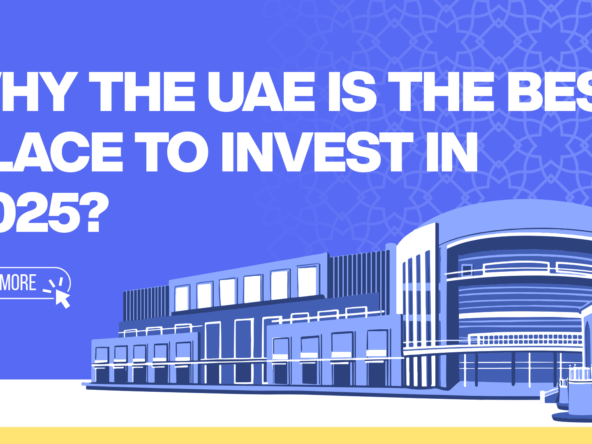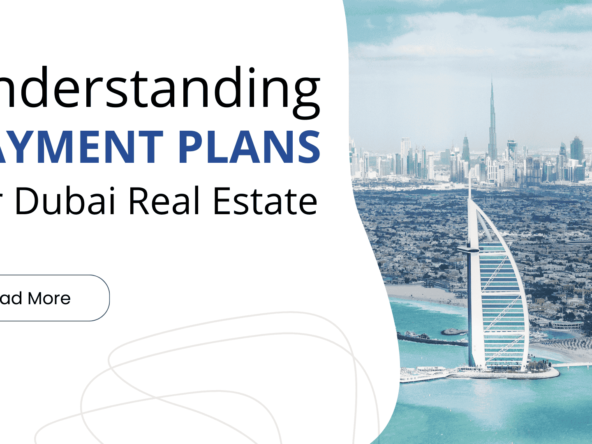Dubai’s global prominence is the result of visionary leadership and world-class urban development, making it a top choice for both investors and residents. All the success and recognition Dubai has achieved so far is built on consistent hard work, dedication, and a strong bond of trust with its people and investors. To maintain this momentum and continue its growth, Dubai has set its sights on the future through the ambitious Dubai Urban Plan 2040 — a strategic vision to ensure the city remains a global leader in development, sustainability, and innovation.
To make the city more comfortable, nature-friendly, and vibrant for its residents, the government has launched the Dubai Urban Master Plan 2040. This comprehensive plan includes a well-structured layout and strategic city design aimed at enhancing livability. In celebration of Dubai’s continued development, the government has crafted this visionary plan to improve the city’s environmental health while supporting the growth of sustainable, future-ready infrastructure.
From this, we can understand how important the master plan is for the city—how it impacts urban development, contributes to a healthier environment, and supports long-term progress. Additionally, we will explore the population growth strategy, the 2040 structural framework, the Hatta development plan, and other related components.
What is the Dubai 2040 Urban Master Plan?
The Dubai 2040 Urban Master Plan is a long-term strategy designed to guide the city’s development over the next 20 years. It focuses on addressing the growing infrastructure needs, supporting the increasing population, and boosting the economy. The plan aims to transform Dubai into a global city where residents can find everything in one place, integrating advanced technology and modern urban living to enhance the overall quality of life.
The Dubai Urban Master Plan 2040 was launched in March 2021 with the primary goal of creating a balanced and sustainable lifestyle across the emirate. With Dubai’s population projected to reach 5.8 million by 2040, the plan aims to accommodate this growth while ensuring comfort, ease of living, and environmental harmony. Centered around five key pillars—population and economic growth, land use, quality of life, tourism development, and sustainability—the plan presents a comprehensive vision for the city’s future development.
Core Elements of the Master Plan
The main goal of Dubai’s Master Plan is to positively impact and enhance the lives of everyone in the city. This plan focuses on several key areas, which include
- Accessible and Cost-Effective Housing
- Enhanced Transport and Infrastructure Networks
- Hubs for Arts, Culture, and Innovation
- Integrated Multi-Purpose City Zones
- Eco-Friendly Urban Growth
Accessible and Cost-Effective Housing.
One of the key objectives of Dubai’s Master Plan 2040 is to provide affordable housing. This initiative aims to make it easier for anyone looking to buy a home in Dubai to find options within their budget. The strategy is centered on developing inclusive neighborhoods with housing solutions that cater to all income levels.
Enhanced Transport and Infrastructure Networks.
Dubai has already been facing significant traffic issues, and with the expected increase in population, finding solutions to these problems has become essential. In the new Dubai Master Plan, a strong focus is placed on enhancing the transportation system. This includes expanding public transit through greater metro coverage and developing pedestrian- and cyclist-friendly areas to reduce traffic congestion and promote sustainable mobility.
Infrastructure improvements are designed to promote sustainable mobility while reducing reliance on personal cars.
Hubs for Arts, Culture, and Innovation.
By establishing cultural districts and creative hubs, Dubai is fostering growth in this sector. Additionally, the city has made significant strides in attracting people from all over the world who are part of the creative industry.
Integrated Multi-Purpose City Zones.
In the 2040 Master Plan, the city will feature a mix of different uses, with areas combining residential, commercial, and entertainment facilities. The main goal of this approach is to ensure that residents have everything they need within close proximity, making their daily lives more convenient and accessible.
Two prominent examples of these emerging communities are Dubai South, the largest urban development in Dubai and the future center surrounding Al Maktoum Airport, and Expo City, where the renowned developer Aldar has revealed ambitious plans for a large-scale mixed-use project.
Eco-Friendly Urban Growth.
Dubai’s Master Plan 2040 focuses on one of its most important and valuable goals. In this plan, 60% of the land will be dedicated to nature and village development, which will play a key role in improving the environment of the emirate.
In this plan, there will be a greater focus on nature, including the development of gardens, green spaces, and other nature-related elements. This will create a healthier environment for residents, allowing them to connect more with nature and enjoy an enhanced quality of life.
The plan also emphasizes sustainability in Dubai by prioritizing renewable energy sources and eco-friendly construction methods.
Key Zones in the Dubai 2040 Urban Master Plan.
The Dubai master plan will bring various benefits to all areas. It identifies specific growth zones aimed at meeting diverse needs and objectives.
Parks and Waterfronts.
The main focus of the plan is to increase greenery and public gardens. Its primary goal is to make the city 55% greener, transforming it into a more livable and comfortable place for residents. Additionally, the total length of public beaches will expand by 400%, greatly enhancing Dubai’s coastline and offering more leisure options for both locals and tourists.
Creative Hubs and Special Economic Zones.
The master plan aims to strengthen Dubai’s position in global business and innovation. New enterprise and technology zones will create an ecosystem that fosters investment and business growth. With state-of-the-art facilities and strategic advantages, these zones will enable Dubai to stand out in the global economy.
Central Urban Areas.
Dubai’s master plan designates five key urban hubs, including the existing districts of Deira/Bur Dubai, Downtown/Business Bay, and Dubai Marina/JBR, as well as new development centers in Expo City and Dubai Silicon Oasis.
These areas offer a variety of facilities, including entertainment options, cultural districts, towering buildings, and ample greenery.
Living Zones.
The development of hospitals, small shops, schools, and more will be part of the Master Plan 2040. Emerging districts in the southern and western parts of the city will be developed to accommodate expected population growth while ensuring environmental sustainability.
Changes for Locals and International Visitors.
The 2040 Urban Plan is designed to benefit both residents and visitors of Dubai. The goal of the plan is to improve air quality by reducing CO₂ levels, enhance the lifestyle of residents, and provide greater stability in their lives. Through this plan, facilities such as more public spaces, parks, greenery, and entertainment options will be available in one place, offering a space where people can engage and be entertained.
The plan also aims to captivate foreign visitors with the city’s unique structure, filled with greenery and close to various cultural and entertainment hubs. This creates a distinctive experience for them. Additionally, the plan focuses on improving transportation to reduce traffic congestion, ensuring that visitors to Dubai won’t face any issues related to the transportation system.
The city’s emphasis on green initiatives is expected to draw more visitors who prioritize sustainable tourism and eco-friendly lifestyles.
Core Results Expected from the Dubai 2040 Vision.
Several remarkable goals are set to be achieved under the Dubai Urban Master Plan 2040, including
Economic Progress and Industry Diversification.
The Dubai Urban Master Plan 2040 highlights growth in tourism, the economy, and cultural initiatives. By focusing on these sectors, significant growth is anticipated. As many districts are developed within the urban plan, there will be ample opportunities for new jobs and business ventures, benefiting both Dubai residents and interested individuals.
Cultural Empowerment and Creativity Boost.
By establishing creative hubs and cultural districts, Dubai seeks to promote artistic expression and draw global talent, further strengthening its position as a dynamic cultural and economic hub.
Sustainable Development Leadership.
One of the key objectives of the Dubai Urban Plan 2040 is to set an example of stable, next-level infrastructure for the world. By prioritizing sustainability through clean energy, green building standards, and expansive parks, Dubai is positioning itself as a model for eco-friendly urban planning.
Improved Living Standards.
The focus on sustainability, greenery, and cultural growth has a positive impact on both residents and Dubai’s economy. With healthier living in greener, more walkable neighborhoods, Dubai’s smart development plan ensures that no area is left behind.
Urban Foresight and Smart Innovations.
Cities that are constantly growing can look to the 2040 urban plan as a model for future development. With technological advancements on the horizon, the master plan will incorporate next-generation innovations, including smart city infrastructure, AI integration, and self-driving transportation systems. For example, His Highness Sheikh Mohammed bin Rashid Al Maktoum, Vice President and Prime Minister of the UAE and Ruler of Dubai, has outlined a vision for 2030, aiming for 25% of all transportation trips in the city to be driverless and integrated with smart technology.
This urban plan has made Dubai a source of pride, where all kinds of technology and services are easily accessible.
In the future, Dubai will become a hub for technology, residents, tourists, and businesses, making it an ideal place. As the population of the UAE continues to grow, its advancements in technology, greenery, and sustainability will showcase to the world how much Dubai has evolved in these areas.
There is also off-plan property in Dubai’s Urban Plan 2040.
Dubai has always been a city focused on rapid growth, and it has successfully achieved that. One of the key factors behind this success is off-plan development. With off-plan properties, buyers have the opportunity to purchase before construction begins, allowing them to invest at lower prices and potentially secure strong returns. This approach provides developers with consistent funding for large-scale projects. Not only is this a great investment opportunity, but it also supports Dubai’s Vision 2040. Off-plan developments offer the freedom to create sustainable, smart homes, which aligns with the city’s long-term goals for innovation and sustainability.
In line with Vision 2040, the progress of Dubai’s development has already begun in several areas. Off-plan projects are strategically positioned to support Dubai’s ambition of becoming a global hub for sustainability, business, and tourism. Key developments are driving growth in key locations across the city.
- Dubai Creek Harbour – Located along Dubai Creek Harbour, this waterfront project is poised to become a prominent new landmark in the city’s skyline. The aim is to attract a diverse, sustainable community that blends entertainment, culture, and business purposes, incorporating these elements into its design. The structure of Dubai Creek Harbour is set to surpass the height of the Burj Khalifa. Additionally, it is located near the Ras Al Khor Wildlife Sanctuary, making it a unique blend of urban development and natural preservation.
- Dubai South- Dubai South is located next to Al Maktoum International Airport, and its growth is closely tied to the expansion of the airport. The development is designed to foster a vibrant city by integrating residential, commercial, and transit-oriented areas.
- Mohammed Bin Rashid City (MBR City) – MBR City is one of Dubai’s largest developments, designed to be a self-sustained community featuring luxury homes, expansive green spaces, and world-class entertainment, all aimed at providing a premium lifestyle.
Conclusion.
In conclusion, the Dubai 2040 Urban Master Plan marks a bold and visionary step toward creating a sustainable, innovative, and globally competitive city. By focusing on key areas such as population growth, infrastructure development, sustainability, and cultural expansion, Dubai aims to enhance the quality of life for its residents and visitors. The integration of cutting-edge technologies, including smart city solutions and autonomous transport, alongside the creation of mixed-use urban spaces and green environments, will redefine the city’s future. With a strong commitment to economic diversification and inclusivity, Dubai is poised to remain a global leader in urban development, attracting investment and talent from all over the world while ensuring a balanced and thriving city for generations to come.



